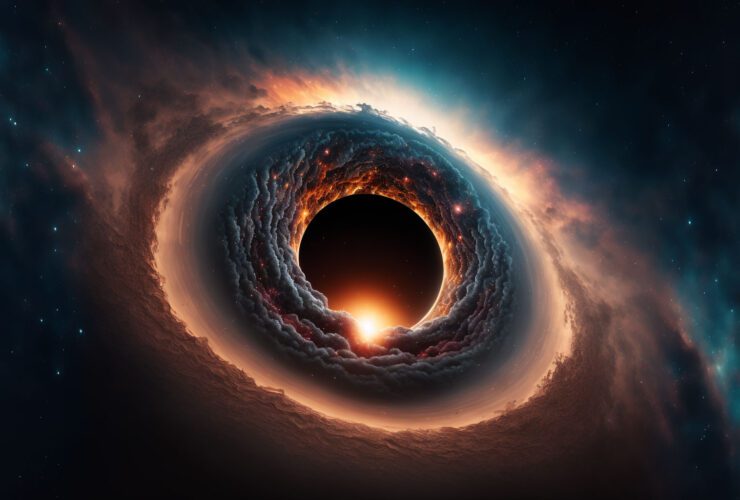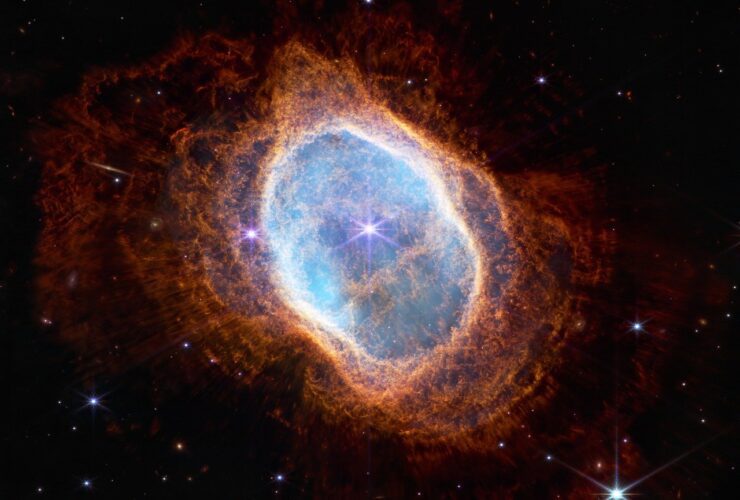You know that feeling when you find something in your closet you forgot existed? Astronomers just had that moment, but on a cosmic scale. Using a radio telescope network the size of Europe, they’ve spotted a black hole jet so ancient ...
Astronomers have just uncovered a cosmic marvel—a supermassive black hole, weighing in at a jaw-dropping 700 million suns, shooting an energy beam straight toward Earth. This newly discovered “blazar” is not only record-breaking in its age but also a gateway ...
You know, the universe has a knack for throwing curveballs just when we think we’ve got it all figured out. Recently, astronomers stumbled upon a cosmic odd couple—two stars pirouetting around each other in the chaotic dance hall near Sagittarius ...
In a mind-bending discovery that has astronomers buzzing, NASA’s James Webb Space Telescope has captured something no one expected—a primordial black hole from the early universe expanding at a pace that defies current scientific theories. We’re talking about LID-568, a ...
You won’t believe what astronomers just found—a black hole from the early universe that’s chowing down on matter like there’s no tomorrow! Imagine someone at an all-you-can-eat buffet devouring 40 times more than the maximum limit. That’s essentially what this ...
Cosmic Fireworks Close to Home: Scientists Discover Record-Breaking Radiation from Nearby Black Hole
When you think of cosmic powerhouses, you probably imagine distant galaxies, light-years away from Earth, doing their mysterious thing far, far from our little blue planet. Well, scientists have just uncovered something close to home that’s challenging everything we thought ...
Astronomers have had their sights set beyond Neptune for decades, hoping to find an elusive heavyweight dubbed “Planet Nine.” This hypothetical planet, if it exists, could account for the strange orbits of objects on the outskirts of our solar system, ...
Black holes remain some of the most mysterious and dangerous cosmic objects, as falling into one will almost certainly not give you the ability to travel in time, as happened in the sci-fi movie “Interstellar” from 2014. Black holes can ...
It has just been revealed that experts discovered the largest black hole in the Milky Way. Check out the latest reports about this below. Largest black hole in the Milky Way According to a study published on Tuesday, astronomers have ...
One of the fascinating aspects of black holes is their mystery, meaning simply the fact that astrophysicists and scientists, in general, still have a lot more to learn about these cosmic objects. Another fascinating aspect about them is that despite ...
The intermediate-mass black hole revealed itself to astronomers when it guzzled up a star strayed too close. The shredding of the star produced a flare of radiation that shortly outshone the combined stellar light, known as a “tidal disruption event.” ...
NASA’s next-generation James Webb Space Telescope continues to be under the spotlight after it has presented photos of Jupiter, Neptune, and much larger celestial bodies. The telescope has now found evidence of a cluster of galaxies merging around a black ...
A collision between a comet or asteroid and a planet is interesting enough. It can leave behind a huge crater and a vast blanket of dust that shall block the sunlight for hundreds or thousands of years. As a result, ...
Less than a week ago, we gladly shared the news about NASA’s James Webb Space Telescope (JWST) revealing the first full-color images of the Universe’s depths. We’ve seen new images of stars, galaxies, nebulae, and more. We’re talking about the ...
An undiscovered black hole lurking in the Milky Way galaxy may be the world’s tiniest ever, according to one calculation of its mass. An isolated stellar-mass black hole was discovered earlier this year by a team headed by Space Telescope ...
Have you ever wondered what a black hole could sound like? Those huge, dark, and dominating behemoths of the Universe can be considered extremely sinister and evil. Nothing that comes nearby could possibly escape a black hole. NASA has revealed ...
Oddly enough, the Universe hasn’t been around forever. It had a beginning, and it will have an ending. Most astronomers and astrophysicists agree that the beginning was marked by the Big Bang event that occurred roughly 13.7 billion years ago. ...
NASA’s Hubble telescope has been diving deep into the Universe’s wonders for three decades now, and it still has a lot to prove. If you have already heard about the galaxy known as NGC 7172, it could mean that you’re ...
It’s difficult to imagine something more scary and destructive than a supermassive black hole, most people would say. But how about two such cosmic monsters dancing around one another until their impending demise through collision? That’s exactly what astronomers discovered ...
A weird X-ray light observed in the skies three years after an incredible collision between two neutron stars is a scientific first. According to scientists investigating the area of space, the merger may have formed an afterglow from the kilonova ...
In 2020, a team coordinated by the European Southern Observatory (ESO) scientists announced the discovery of the nearest black hole to Earth, found in the HR 6819 system at a distance of only 1,000 light-years. However, other scientists, notably an international ...
A physicist at the University of Michigan is utilizing quantum computing plus machine learning to help comprehend the concept of holographic duality. Holographic duality is a mathematical concept that links particle theories and interactions with gravity theory. This conjecture implies ...
Breaking and reconnecting magnetic field lines at the event horizon unleash the energy from a black hole’s magnetic field, speeding particles that cause intense flares, according to researchers at the Flatiron Institute and its partners. The discoveries point to fascinating ...
A black hole’s structure is straightforward in the grand scheme of things. All you need to know is the black hole’s mass, electric charge, and spin to determine the structure of space and time surrounding it. However, things get complicated ...
Black holes remain one of the most elusive and mysterious types of space objects. It couldn’t be otherwise when we’re talking about space objects that defy even the laws of physics themselves. Nobody knows for sure what happens with matter ...






























